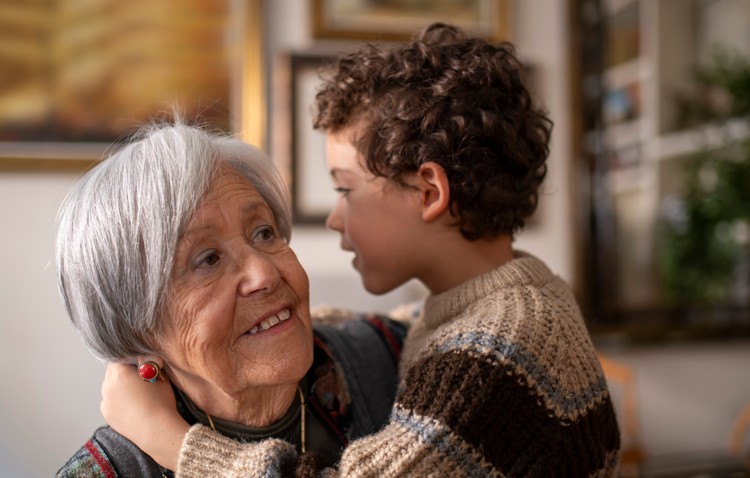Have you ever noticed how caring for someone can quietly reshape your whole sense of time?
Days don’t move from morning to night anymore. They move from medication to meal, from small sighs to small victories.
Many family caregivers describe this phase as “just helping out,” but what they’re really doing is holding an entire emotional ecosystem together. They make decisions, translate medical jargon, remember every date, every pill, every shift in mood all while trying to sound calm.
At some point, the question appears:
How do I keep doing this without losing myself?
That’s where senior living conversations often begin, yet most families approach them backwards; focusing on logistics before emotions. The truth is, the hardest part of transition isn’t the paperwork or the moving boxes. It’s the invisible negotiation between love, guilt, and identity.
Think about it:
You’ve been the constant presence, the bridge between worlds. How do you start to change that role without feeling like you’re disappearing?
This guide is for those moments in between when you’re searching for language that comforts, not convinces.
We’ll explore how caregivers can communicate with honesty and calm, how to involve other family members without chaos, and how to rebuild support around you so that caring becomes sustainable again.
Because when the emotional architecture is solid, every decision becomes lighter.

Why Caregivers Burn Out Even When They’re Doing Everything Right
If you’re caring for someone you love, you probably don’t think of yourself as a “caregiver.”
You just do what needs to be done. You show up. You organize the pills, answer the same questions, calm the fears, and try to smile when you’re already running on empty.
That quiet dedication is what makes you extraordinary and what also puts you most at risk.
Burnout doesn’t start with failure; it starts with love that has nowhere to rest.
Most caregivers believe they’re managing fine because everything looks under control. Meals get served, appointments happen on time, the house stays calm. Yet the body keeps score. Sleep becomes fragmented. Patience runs thinner. Moments of silence feel like guilt instead of peace.
These are not personal flaws. They’re biological and emotional signals that the system you’ve built needs reinforcement. Let’s look at what’s really happening beneath the surface.
- Your brain is always on alert.
Even when you sit down, part of you is still listening — for a voice calling your name, a sound in the hallway, a sigh that might mean discomfort. This constant readiness floods your body with stress hormones. Over time, relaxation stops feeling natural because your brain doesn’t trust it. - You absorb emotions without noticing.
Caregivers often become emotional mirrors. When the person you love is anxious, your heart races too. When they’re sad, you carry that sadness like weather. It’s empathy doing its job, but without recovery time, it turns into exhaustion. - You’ve become the strong one and it’s hard to step down.
Families often orbit around whoever can handle the most. You probably know every detail of medications, appointments, and moods. People admire that. But being “the one who holds it all together” can silently isolate you. The thought of asking for help feels almost like letting the family fall apart.
To see where you are in this cycle, ask yourself:
- Do you ever feel tired even after a full night of sleep?
- When you get time for yourself, do you know what to do with it?
- Have you noticed that even gratitude feels heavier lately?
Burnout doesn’t arrive suddenly. It’s the slow fading of color in a life that once felt bright.
And yet, recovery doesn’t require drastic change it starts with presence.
Try one small thing today: write down what you felt, not what you did.
Maybe: “Today I felt impatient.” Or “Today I felt proud.” The goal isn’t to fix it, but to reconnect with yourself, the person behind the caregiver.
The Psychology of Letting Go: Talking About Senior Living With Compassion and Clarity
The Shift You Don’t Announce
The moment arrives quietly.
Not as a decision, but as a realization that things have changed: a forgotten pan, a repeated story, a stumble that feels too close to danger. Someone says, “Maybe it’s time we talked,” and everyone goes still.
Talking about senior living is rarely about logistics. It’s about identity, memory, control, and fear of becoming unnecessary. Understanding this psychology is what turns a hard conversation into a humane one.
Step 1. Prepare the emotional temperature
Before you start, pause.
Observe what’s happening inside you: frustration, guilt, maybe tenderness wrapped in exhaustion. Those feelings will shape the tone of the conversation more than the words you choose.
A calm tone regulates both nervous systems — yours and your loved one’s.
Try simple grounding steps:
- Breathe slowly through the nose before entering the room.
- Begin with something neutral and kind: “I’ve been thinking about how we can make things easier at home.”
- Avoid technical talk in the first minutes. Let the conversation start from warmth, not problem-solving.
This isn’t manipulation; it’s emotional pacing. Conversations about change need soft landings.
Step 2. Talk about daily life, not destinations
Saying “We need to move you to a community” instantly activates loss.
Instead, explore the day.
Ask questions that help both of you notice where life feels heavy:
- “What part of the day drains you most?”
- “Is there a moment when you wish someone was nearby?”
- “What do you miss doing that’s harder now?”
Each answer is a doorway. When your loved one identifies a challenge, you can gently connect it to support: “That’s something we could get help with — there are places designed for that kind of comfort.”
This approach respects agency. It keeps dignity in the equation, because decisions feel lighter when they grow from self-awareness instead of pressure.
Step 3. Make space for emotion
No family escapes this part. There will be tears, silence, or frustration. That’s normal.
When it happens, resist the instinct to fix it.
Sit quietly. Let emotion move through the air like weather. It will pass if you give it room.
Helpful phrases sound simple, but they open trust:
- “That sounds painful.”
- “You’ve built a beautiful life here. I understand why this feels difficult.”
When we validate emotion, the brain releases tension instead of building defense. It’s biology working in favor of empathy.
Step 4. Reimagine the story together
Once the intensity fades, begin to draw small pictures of what’s possible.
Use details real, sensory, and personal:
- “There’s a patio where people read in the mornings.”
- “They have art classes on Tuesdays — like the ones you used to love.”
- “You could still have your favorite armchair in your new space.”
This helps the mind translate unknown into familiar.
It’s not persuasion; it’s imagination used as comfort. Humans accept change more easily when they can visualize it.
Step 5. End with openness
Don’t close the conversation with a deadline. Close it with continuity:
“I’m glad we talked. Let’s keep thinking about what could feel best for both of us.”
Letting go happens in layers. Each talk removes a little fear, replaces it with clarity, and slowly turns resistance into participation.
Reflection
Letting go isn’t the opposite of caring. It’s the next level of it.
It means trusting that support can multiply love, not replace it.
When families approach these talks with honesty and patience, something shifts.
The fear softens. The relationship transforms from “I take care of you” to “We take care of each other.”
And that’s where peace begins in shared responsibility, spoken gently, at the right time.

From Solo Care to Shared Care: Creating a Family Network That Actually Works
Caregiving often begins as a personal promise — I’ll take care of you.
But promises built on love sometimes turn into invisible systems of exhaustion. The real art lies in transforming that one-person effort into a shared network of care.
A healthy support system doesn’t appear by accident; it’s built with small, intentional actions.
Start by mapping who is already involved.
List every person connected to your loved one — family, friends, neighbors, even professionals. Notice who checks in, who brings groceries, who simply listens. This simple exercise turns vague goodwill into visible resources.
Define small, specific roles.
Care networks fail when everyone offers “help” but no one knows what that means. Assign tasks that match each person’s capacity: one manages appointments, another organizes meals, another keeps emotional company through calls or visits. Clarity prevents burnout and resentment.
- Keep information visible and shared.
Use a shared calendar or group chat where everyone can update notes, schedules, or observations. It keeps communication transparent and prevents one person from becoming the memory bank for everyone else. Practice emotional hygiene.
Caring for someone can awaken guilt, pride, fear, and tenderness all at once. Families that talk about emotions stay stronger. A short weekly check-in — even ten minutes — helps release pressure and rebuild connection.
When care becomes collective, something subtle happens: everyone begins to breathe again. The loved one feels surrounded by presence, and the primary caregiver finally has room to rest, recover, and simply be family again.
At Tribute at Melford, we understand how complex that transition can feel. Our team of experts guides families through every step; from emotional readiness to personalized care plans, creating a bridge between home and community life.
Because meaningful living in Bowie, MD, begins with the courage to ask for help and the wisdom to accept it.

